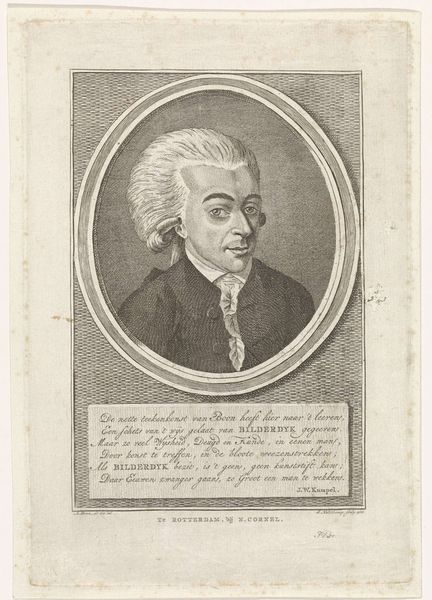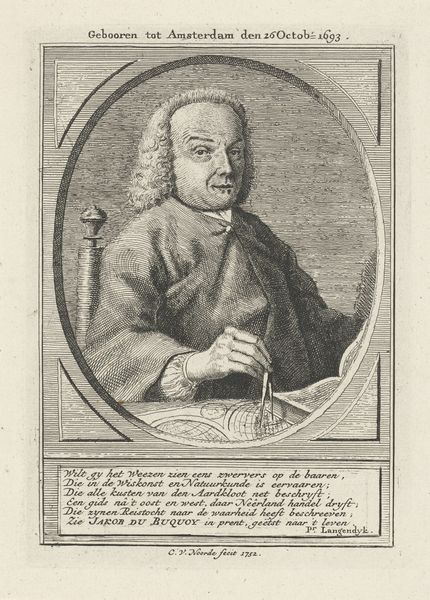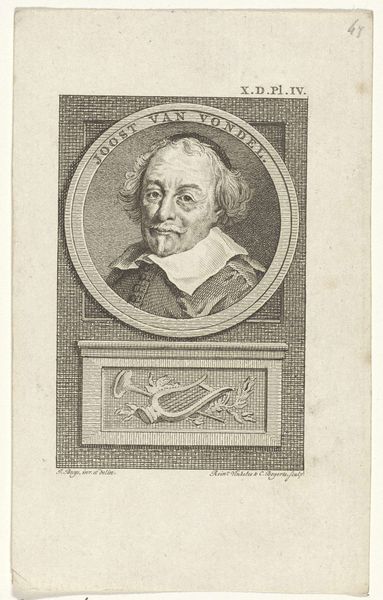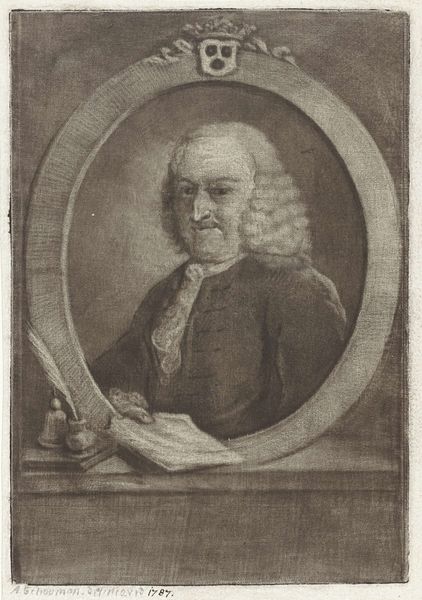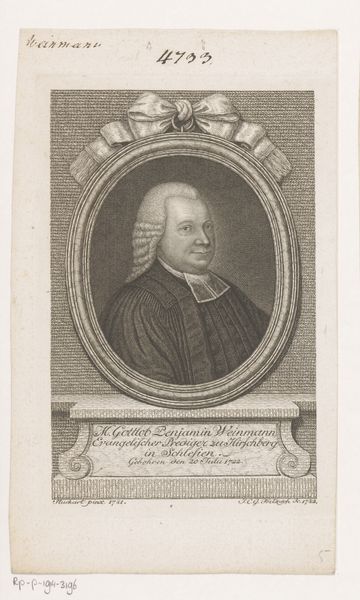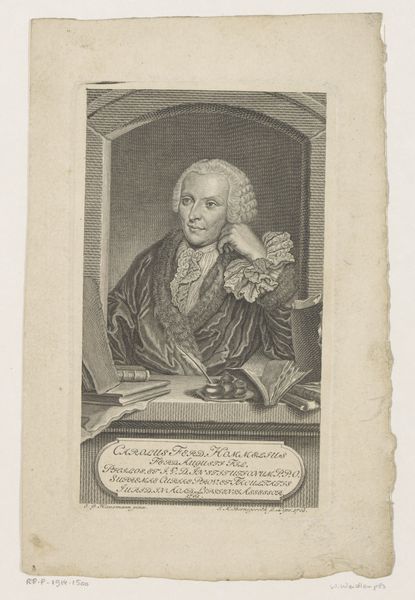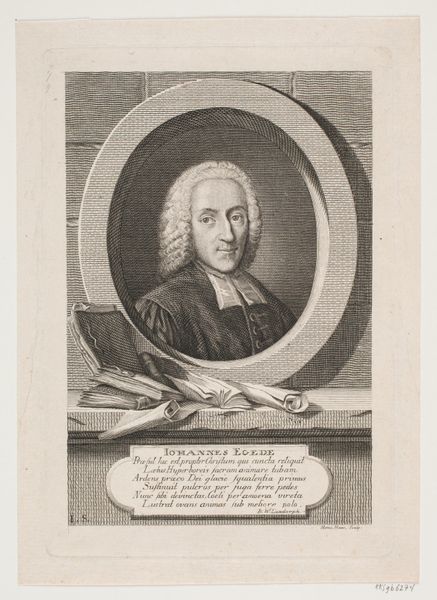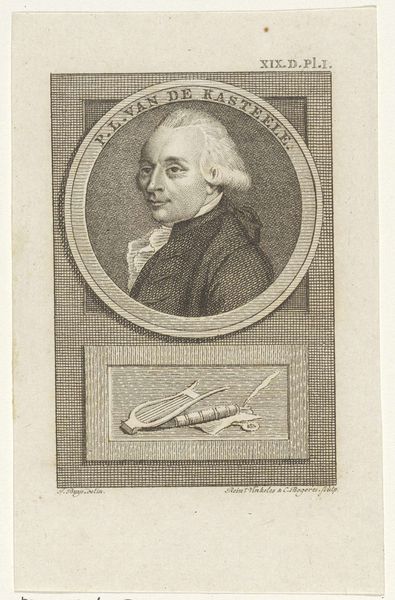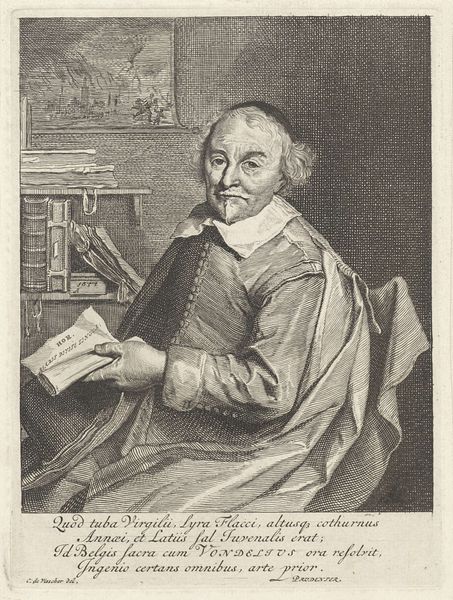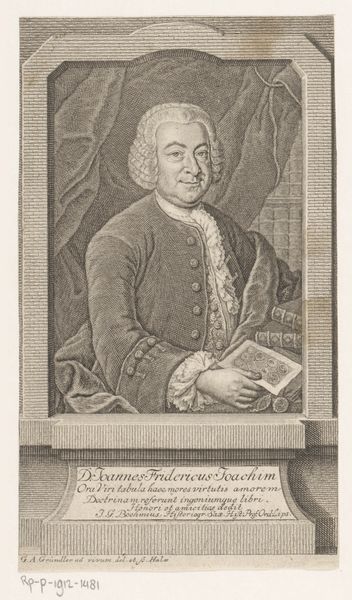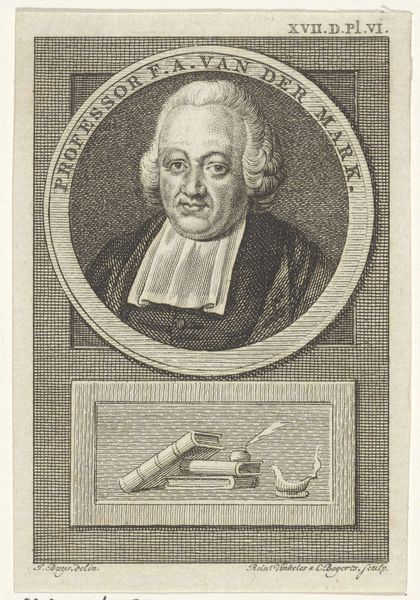
Dimensions: height 97 mm, width 65 mm
Copyright: Rijks Museum: Open Domain
Curator: Immediately, the stark contrast and the graphic precision grab me. It feels so deliberate in its making, economical almost. Editor: That's an astute observation. What you are observing is “Portret van Paul Henri Marron,” an engraving likely created between 1783 and 1795 by Reinier Vinkeles. It’s currently held here at the Rijksmuseum. Curator: An engraving, of course! That explains the fineness of the lines and the clever use of cross-hatching to suggest depth. Tell me, who was Marron, and what can we gather from the means of its production? Editor: Paul Henri Marron was a prominent Protestant minister in Rotterdam during a tumultuous period of religious and political change. As a Protestant clergyman he navigated the complexities of faith in revolutionary Europe. Curator: And the act of creating an engraving... That itself is telling. This wasn't a unique painted portrait for a wealthy patron; it was intended for wider circulation, right? Think about the social implications – making a pastor's likeness reproducible meant reinforcing his image as a spiritual authority among his congregation. Editor: Precisely. Engravings allowed for dissemination of images and ideas, bolstering Marron’s image but also underscoring the significance of the church's leadership role during the Age of Enlightenment and its immediate aftermath. Curator: I also notice the open book at the bottom. That speaks volumes! The deliberate act of representation and circulation surely affects our modern understanding of both Protestant imagery and production of that period. The paper used, the ink, the very act of making multiple copies—each impression is charged with social meaning. Editor: The inclusion of the open book beneath him certainly underscores his profession. Perhaps it’s even a visual metaphor for the spread of knowledge and religious reform at the time. The style of his dress too reflects his place in that society. Curator: And thinking about who would have commissioned this portrait – was it the church itself, or perhaps Marron's admirers? And the artisans who produced it; what can we glean about their workshops, the economic forces at play? That level of engagement opens so many more questions about this artifact. Editor: Looking at this piece through those different lenses has truly enriched our perception, moving beyond merely observing an image of a man to grasping the network of social, economic, and political forces that produced and distributed this particular likeness. Curator: Agreed. A compelling example of how the most seemingly straightforward image can reveal deeper layers of meaning through exploration of both the concrete process and its socio-historical context.
Comments
No comments
Be the first to comment and join the conversation on the ultimate creative platform.

